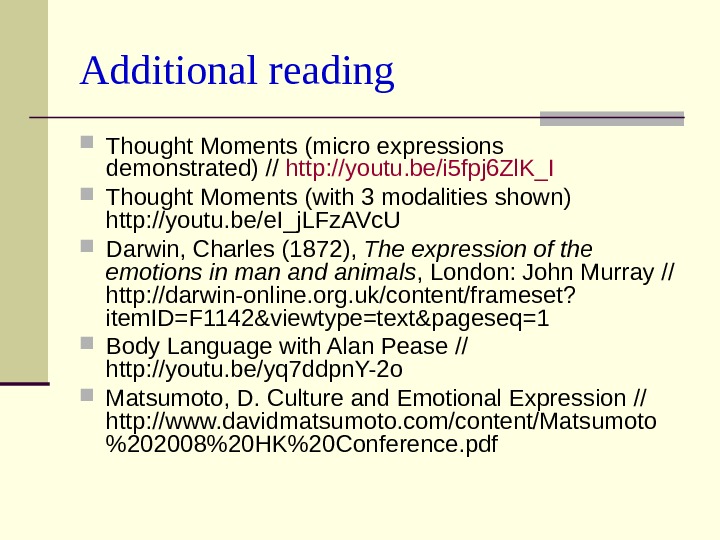Презентация pedagogy lect3 2 part v09










- Размер: 70 Кб
- Количество слайдов: 9
Описание презентации Презентация pedagogy lect3 2 part v09 по слайдам
 3. Features of learning process (part. 2) Marusenko R. , Ph. D maru@fm. com. ua. Pedagogy of Higher Education
3. Features of learning process (part. 2) Marusenko R. , Ph. D maru@fm. com. ua. Pedagogy of Higher Education
 Structure of educational process Goal of educational process Teacher Student Result achieved by the Student (resulted by teacher’s activity)Content (Discipline knowledge) Methods and techniques (Pedagogical knowledge)
Structure of educational process Goal of educational process Teacher Student Result achieved by the Student (resulted by teacher’s activity)Content (Discipline knowledge) Methods and techniques (Pedagogical knowledge)
 Learning paradigms Learning — the acquisition of knowledge or skills through study, experience, or being taught Oxforddictionaries. com How is learning provided? Which factors influence? Function of memory? Role of teacher? Type of activity of learner? Peculiarities of process?
Learning paradigms Learning — the acquisition of knowledge or skills through study, experience, or being taught Oxforddictionaries. com How is learning provided? Which factors influence? Function of memory? Role of teacher? Type of activity of learner? Peculiarities of process?
 More theories step-by-step learning theory Cognitive load theory Self-regulated learning Sociocultural theory Constructivism Distributed cognition theory Connectivism Information processing theory Operant conditioning theory Schema theory Etc… See sources for further reading
More theories step-by-step learning theory Cognitive load theory Self-regulated learning Sociocultural theory Constructivism Distributed cognition theory Connectivism Information processing theory Operant conditioning theory Schema theory Etc… See sources for further reading
 http: //farm 6. staticflickr. com/5201/5193654388_1 b 80 aba 4 b 4_o. gif
http: //farm 6. staticflickr. com/5201/5193654388_1 b 80 aba 4 b 4_o. gif
 Sequence of learning process (associative and reflectory learning) — I Creation Application Understanding Memorizing Perception Data (known information Understanding and reproduction) Skills (known) Abilities (known)New information (elaboration) New skills and abilities (invention) Actual skills, abilities evolvement. Cognitive activity
Sequence of learning process (associative and reflectory learning) — I Creation Application Understanding Memorizing Perception Data (known information Understanding and reproduction) Skills (known) Abilities (known)New information (elaboration) New skills and abilities (invention) Actual skills, abilities evolvement. Cognitive activity
 Problem oriented learning — II Targeting principles. . . Intensification of learning activity… Studying activity fixation, adjustment and feedback… Participation in group and individual forms of problem solving… Analysis and reflection…
Problem oriented learning — II Targeting principles. . . Intensification of learning activity… Studying activity fixation, adjustment and feedback… Participation in group and individual forms of problem solving… Analysis and reflection…
 And what to do? Next topic disclose: Peculiarities of learning process… Homework ( deadline – 26. 10. 2013 ) 1. Learning paradigms. Read about main of them. Choose one that you like most. Answer the question within the frame of chosen paradigm: Q: How to convince/persuade/motivate student to do his/her homework In time? (explain in brief form an algorithm – how you propose to motivate him) Send me your answer. 2. I recommend to watch “ Thought Moments ” (reference on next page) to understand another interesting phenomenon about facial expressions. If you’ll have questions, we’ll discuss them… Explanation of expressions’ clues can be found in Ekman’s papers (see list of ref). 3. Think about your today’s reading of ‘text’ with letters and digits. What is this ability about? We’ll discuss…
And what to do? Next topic disclose: Peculiarities of learning process… Homework ( deadline – 26. 10. 2013 ) 1. Learning paradigms. Read about main of them. Choose one that you like most. Answer the question within the frame of chosen paradigm: Q: How to convince/persuade/motivate student to do his/her homework In time? (explain in brief form an algorithm – how you propose to motivate him) Send me your answer. 2. I recommend to watch “ Thought Moments ” (reference on next page) to understand another interesting phenomenon about facial expressions. If you’ll have questions, we’ll discuss them… Explanation of expressions’ clues can be found in Ekman’s papers (see list of ref). 3. Think about your today’s reading of ‘text’ with letters and digits. What is this ability about? We’ll discuss…
 Additional reading Thought Moments (micro expressions demonstrated) // http : //youtu. be/i 5 fpj 6 Zl. K_I Thought Moments (with 3 modalities shown) http: //youtu. be/e. I_j. LFz. AVc. U Darwin, Charles (1872), The expression of the emotions in man and animals , London: John Murray // http: //darwin-online. org. uk/content/frameset? item. ID=F 1142&viewtype=text&pageseq=1 Body Language with Alan Pease // http: //youtu. be/yq 7 ddpn. Y-2 o Matsumoto, D. Culture and Emotional Expression // http: //www. davidmatsumoto. com/content/Matsumoto %202008%20 HK%20 Conference. pdf
Additional reading Thought Moments (micro expressions demonstrated) // http : //youtu. be/i 5 fpj 6 Zl. K_I Thought Moments (with 3 modalities shown) http: //youtu. be/e. I_j. LFz. AVc. U Darwin, Charles (1872), The expression of the emotions in man and animals , London: John Murray // http: //darwin-online. org. uk/content/frameset? item. ID=F 1142&viewtype=text&pageseq=1 Body Language with Alan Pease // http: //youtu. be/yq 7 ddpn. Y-2 o Matsumoto, D. Culture and Emotional Expression // http: //www. davidmatsumoto. com/content/Matsumoto %202008%20 HK%20 Conference. pdf

